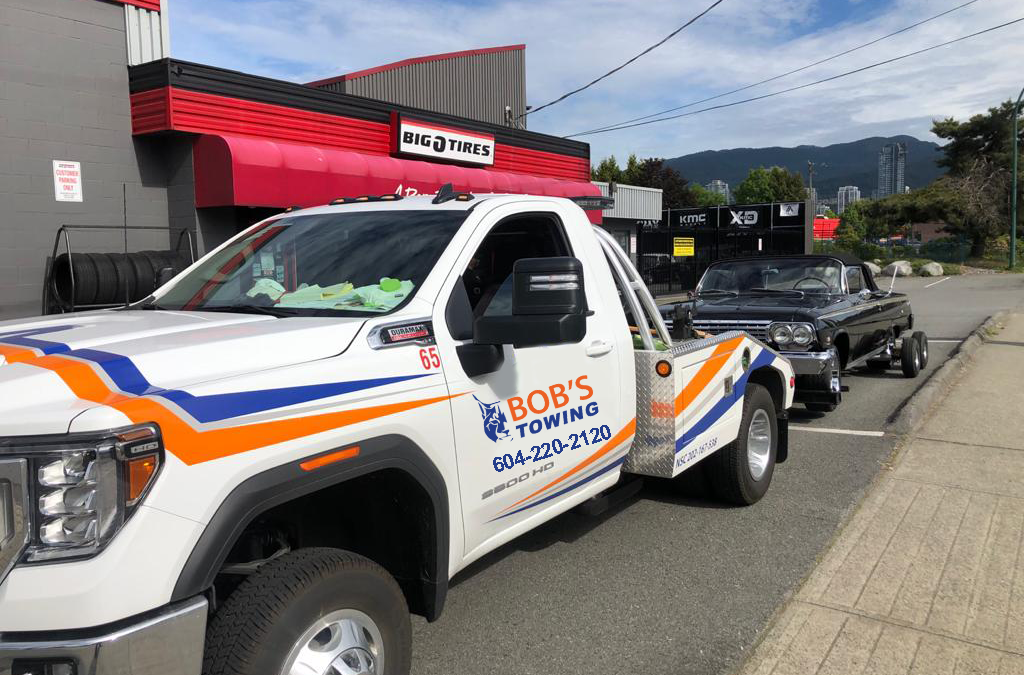Winter conditions pose unique challenges for towing, requiring special precautions and strategies to ensure safety. Explore our comprehensive guide on safe towing in snow and icy roads to navigate these challenging weather conditions successfully.
Snowy Roads and Reduced Traction:
Navigating through snowy roads demands a unique set of skills and precautions, considering the reduced traction caused by snow accumulation. Safe towing in snow requires drivers to adapt to the slippery conditions and maintain a safe following distance.
Ice Accumulation and Slippery Surfaces:
Winter towing faces the additional challenge of icy roads, where the accumulation of ice leads to extremely slippery surfaces. Understanding how to handle these conditions is crucial to prevent accidents and ensure the safety of both the towing vehicle and what is being towed.
Preparing Your Vehicle for Winter Towing
Checking Tire Conditions and Tread
The condition of tires is critical for safe winter towing. Ensuring tires are in good condition and have sufficient tread depth is vital for maintaining traction on snowy and icy roads, reducing the risk of accidents.
Verifying Brake Functionality in Cold Weather
Cold weather can impact brake functionality. Before embarking on winter towing, it’s essential to verify that the brakes are in optimal working condition, ensuring prompt and effective response in challenging weather conditions.
Choosing the Right Towing Equipment
Selecting Appropriate Snow Chains
Snow chains play a significant role in enhancing traction on snowy roads. Choosing the right snow chains for winter towing is essential for providing the necessary grip, stability, and control.
Importance of Adequate Lighting Systems
Winter towing often involves reduced visibility due to adverse weather conditions. Recognizing the importance of adequate lighting systems ensures that both the towed and towing vehicles remain visible on snowy or icy roads, reducing the risk of accidents.
Driving Techniques for Safe Towing in Snow
Maintaining a Controlled Speed
Safe towing in snow necessitates adjusting driving speed to the prevailing road conditions. Maintaining a controlled and moderate speed allows for better vehicle control, reducing the risk of skidding or sliding on icy surfaces. It also provides the driver with more reaction time in case of unexpected obstacles.
Braking Strategies on Icy Roads
Braking on icy roads requires a delicate approach to prevent skidding. Utilizing gentle and steady pressure on the brake pedal helps avoid sudden maneuvers that could lead to loss of control. Techniques such as pumping the brakes or using anti-lock braking systems (ABS) can enhance braking efficiency on icy surfaces.
Safe Loading Practices in Winter Conditions
Distributing Weight Properly
Proper weight distribution is crucial for safe towing, especially in winter conditions. Ensuring that the weight is evenly distributed across the towing vehicle and the trailer helps maintain stability and control. This prevents fishtailing or swaying that can be exacerbated by slippery surfaces.
Securing Cargo for Slippery Roads
Securely fastening and distributing cargo is vital during winter towing. Slippery roads increase the chances of cargo shifting, potentially impacting the stability of the towing vehicle. Properly securing cargo helps maintain balance and reduces the risk of accidents or damage to the towed items.
Weather Monitoring for Towing Safety
Staying Informed About Winter Storms
Constant vigilance about winter storms is essential for safe towing. Keeping abreast of weather forecasts and updates allows drivers to plan their routes strategically, avoiding areas with severe weather conditions. This proactive approach enhances overall safety during winter towing.
Adjusting Travel Plans According to Weather Forecasts
Flexibility in travel plans is key when towing in winter. If adverse weather conditions are predicted along a planned route, having alternative plans or the ability to delay travel can significantly contribute to safety. Adapting plans according to real-time weather information helps avoid hazardous situations.
Importance of Regular Maintenance
Battery Health in Cold Temperatures
Cold temperatures can significantly impact a vehicle’s battery performance. Regular maintenance, including checking the battery’s charge and connections, becomes crucial in winter. Ensuring the battery is in optimal condition enhances the vehicle’s reliability, reducing the risk of breakdowns in snowy conditions.
Engine Coolant and Antifreeze Checks
Engine coolant and antifreeze play pivotal roles in preventing the engine from freezing in winter. Regular checks and maintenance of these fluids are essential for proper engine function, ensuring that the vehicle operates efficiently in cold temperatures without the risk of overheating or freezing.
Emergency Preparedness for Winter Towing
Carrying Essential Winter Survival Gear
Winter towing demands preparedness for emergencies. Carrying essential winter survival gear, including blankets, warm clothing, non-perishable food, and a first aid kit, can be crucial if unforeseen circumstances leave you stranded in harsh winter conditions.
Knowing Emergency Contacts for Assistance
Being aware of emergency contacts for roadside assistance or towing services is paramount. Having this information readily available ensures prompt assistance in case of breakdowns or accidents, contributing to a safer towing experience during winter.
Legal Considerations for Winter Towing
Understanding Towing Regulations in Snowy Conditions
Winter towing often comes with specific regulations to ensure safety on the roads. Understanding and complying with these regulations, such as speed limits for towing in snowy conditions, is essential for both the driver’s safety and legal adherence.
Ensuring Compliance with Winter Towing Laws
Legal considerations for winter towing encompass various aspects, from equipment requirements to restrictions during severe weather. Ensuring compliance with winter towing laws helps prevent legal complications and contributes to a safer towing experience.
Choosing the Right Winter Tires
Selecting Appropriate Tires for Snowy Conditions
Winter towing requires specialized tires designed for snowy and icy conditions. Exploring the options available and selecting the most suitable winter tires ensures optimal traction and control, enhancing the safety of the towing experience.
Importance of Tire Pressure Monitoring
Monitoring tire pressure is critical in winter. Fluctuations in temperature can impact tire pressure, affecting the vehicle’s handling. Regularly checking and maintaining the recommended tire pressure contributes to safer towing operations.
Navigating Challenging Terrains
Understanding Terrain Challenges During Winter Towing
Different terrains pose unique challenges during winter towing. Understanding how snow-covered roads, icy patches, and hilly terrains affect towing dynamics is crucial for adopting appropriate driving techniques.
Applying Safe Towing Practices on Inclines
Navigating inclines in winter conditions demands specific towing practices. Implementing safe techniques, such as maintaining a steady speed and avoiding sudden movements, ensures control and stability while towing uphill or downhill.
Advanced Towing Technologies
Exploring Advanced Towing Assistance Systems
Advancements in vehicle technology offer towing assistance systems designed for challenging conditions. Exploring and understanding these technologies, such as anti-sway systems and stability controls, enhances the safety of winter towing.
Integration of GPS and Navigation Tools
Utilizing GPS and navigation tools tailored for winter conditions aids in route planning and real-time monitoring. Integrating these technologies into the towing process enhances navigation accuracy, reducing the risk of getting stranded in unfamiliar areas.
Winter Towing Training and Certification
Benefits of Winter Towing Training
Investing in winter towing training provides valuable insights into handling challenges specific to snowy and icy conditions. Gaining the necessary skills and knowledge contributes to increased confidence and safety during winter towing.
Certification Programs for Winter Towing
Certification programs focusing on winter towing equip drivers with specialized expertise. Exploring and enrolling in these programs ensures adherence to industry standards and enhances overall towing competency during winter.
Navigating Through Low Visibility Conditions
Enhancing Visibility for Safe Winter Towing
Low visibility is a common challenge during winter towing. Implementing strategies to enhance visibility, such as using fog lights and keeping windows clear, ensures a safer towing experience in snow and icy conditions.
Safe Towing Practices in Snowstorms
Encountering snowstorms requires specific precautions. Adhering to safe towing practices, such as reducing speed, maintaining a safe following distance, and using hazard lights, helps navigate through challenging snowstorm conditions.
Towing on Frozen Waterways
Towing Over Frozen Lakes and Rivers
In regions with frozen water bodies, towing over frozen lakes or rivers presents unique challenges. Understanding the safety considerations, such as ice thickness and potential hazards, is crucial for safe winter towing.
Emergency Protocols for Ice Breakthroughs
In the rare event of an ice breakthrough, having emergency protocols in place is essential. Knowing how to respond, including immediate actions and contacting emergency services, ensures a swift and safe response.
Safe Towing Gear and Accessories
Investing in Quality Tow Straps
Quality tow straps designed for winter conditions are indispensable. Exploring options and investing in sturdy tow straps with proper load ratings contributes to the overall safety of winter towing.
Utilizing Snow Chains for Enhanced Traction
Snow chains play a vital role in enhancing traction on snowy and icy roads. Understanding the correct installation and utilization of snow chains contributes to the safe towing experience in challenging winter conditions.
Emergency Response Preparedness
Developing a Winter Towing Emergency Plan
Creating a comprehensive emergency plan specific to winter towing is a proactive measure. This plan should include steps for contacting roadside assistance, seeking shelter, and notifying relevant authorities, ensuring a swift and organized response to unexpected situations.
Ensuring Vehicle Emergency Kit Readiness
Regularly checking and maintaining a well-equipped vehicle emergency kit is fundamental. Having essential items, such as blankets, non-perishable food, and first aid supplies, ensures readiness for unforeseen challenges during winter towing.
Bob’s Towing: Your Trusted Partner in Safe Winter Towing
At Bob’s Towing, we pride ourselves on being your reliable and trustworthy towing partner, especially during the challenging winter months. With a commitment to safety and professionalism, our team is dedicated to providing top-notch towing services in Burnaby.
Why Choose Bob’s Towing for Winter Towing?
- Expertise in Winter Towing Conditions: Our team at Bob’s Towing comprises skilled and experienced professionals well-versed in navigating the unique challenges posed by winter conditions. From icy roads to snowy terrains, we have the expertise to handle diverse towing scenarios with precision and care.
- Fleet Equipped for Winter Challenges: Our fleet of tow trucks is specially equipped to handle winter towing challenges. From snow chains for enhanced traction to advanced lighting systems for low visibility conditions, we invest in the latest technology to ensure the safety of your vehicle during the towing process.
- Prompt and Reliable Service: Winter emergencies require prompt assistance, and at Bob’s Towing, we understand the urgency of your situation. Our towing services are available around the clock, ensuring that help is just a call away whenever you need it.
We are your Towing Burnaby go-to Team.


Recent Comments